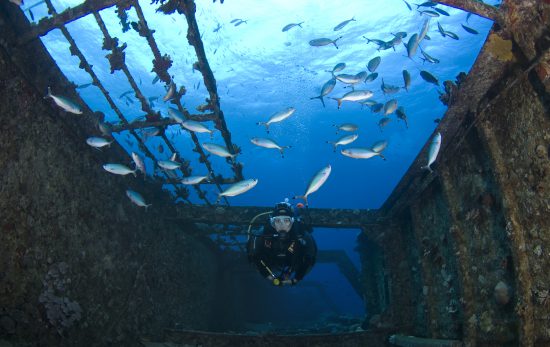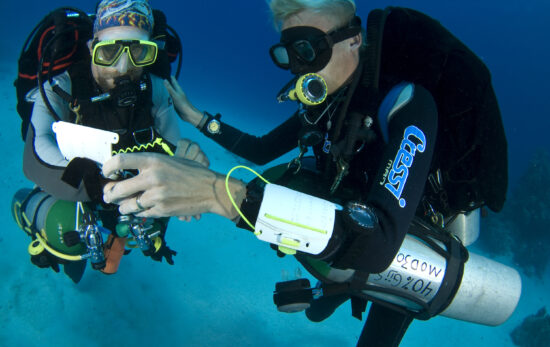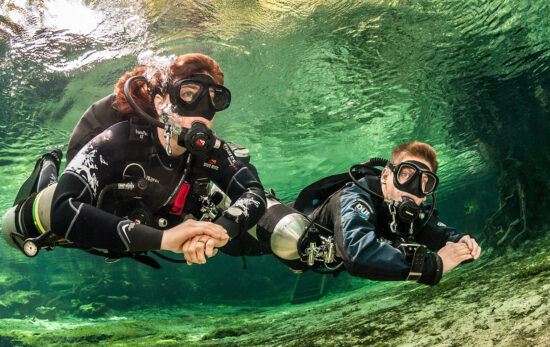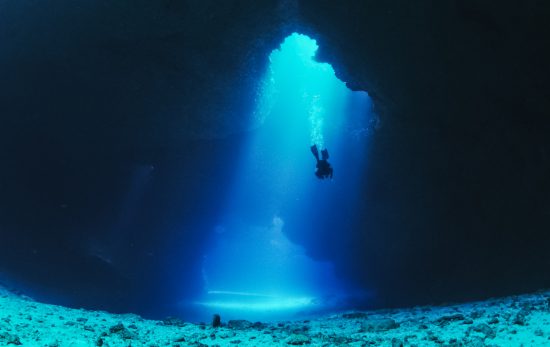With the advent of the first PADI TecRec Distinctive Cave Diver Course, there has never been a better time to start cave diving. It’s also a good time to take a look at the cave environment and why it is so appealing to cave enthusiasts.
There are several types of cave. Divers usually classify them according to rock type and how they are formed: Coral Caves, Sea Caves, Lava Tubes, Ice Caves and Solution Caves. Although all these types of cave are diveable, most of them form only limited tunnels and offer only short penetrations. Solution caves are the most numerous and extensive, and therefore, they are the most popular cave diving destinations. Some well known systems have miles of diveable tunnels with many entrances.
Diveable solution caves are formed through dissolution of limestone and dolomite rocks by weakly acidic flowing groundwater. The water dissolves the rock and carries it away over thousands and millions of years until caves form. Underwater caves and their beautiful surroundings are a window into the past and cave divers often become amateur scientists learning about the geological features and biological history of the areas they dive. The different conditions under which they form create extremely varied results from simple conduits to systems with extensive branching or maze-like passages. Some caves are highly decorated whilst others contain fossils of pre-historic creatures or give us a glimpse of a former coral reef sea bed.
What About Critters?
The entrances to caves often have plenty of life in them and form shelter for anything living in the surrounding environment, whether it is marine or fresh water. However, the further you go back in most caves, the less obvious the life becomes, and the critters are unlikely to be your motivation to cave dive.
So, Why Cave Dive?
Well, let me tell you a story. My dad’s first cavern dive was in a well known cave in France called the Ressel. The entrance is 9 meters (30 feet) deep, and the cavern zone (where light enters the cave) is not very long. To start with, we went in just a few metwes, swam around, had a good look and came back out. He had enjoyed it, so on the second dive we went in just a little further. When we were talking afterwards, he said, “I’d definitely like to come back – I want to know what is beyond the area we dived!” Ha Ha – got you! THAT is the reason I cave dive. I fell in love with the geological features, the puzzle of how caves are formed and what the different formations tell us about their history, but I will never have enough of cave diving because I am insatiably curious. No matter how far I dive in a cave, I always wonder what is around the next corner!
This article was written by Vikki Batten, a PADI International Ltd Technical Consultant and avid cave diver, and originally published in 2010.







